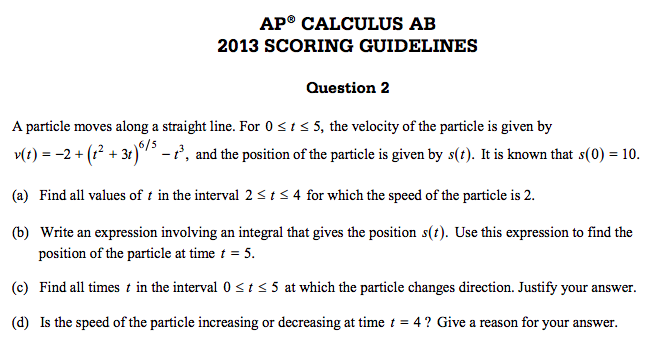How do you solve the AP Calculus AB 2013 Free Response question #2? http://media.collegeboard.com/digitalServices/pdf/ap/apcentral/ap13_frq_calculus_ab.pdf
2 Answers

(a) The first thing you do is that you set
(b) To find the expression you need to know your bounds. Since this is a time function, you know that your lower bound is 0, and since it is an expression for any part of the function your upper bound is t. You have to add 10, because
(c) To do this you have to find all the times that v(t) changes sign. You can do this by looking at a graph on your calculator, and looking between 0 and 5. The values should be t=.536,3.318
(d) To find the acceleration, you have to find the derivative of the velocity function. You do this by using the power rule and the chain rule. The derivative should be
Here is a link to the answer here on Socratic http://socratic.org/questions/how-do-you-solve-the-ap-calculus-ab-2013-free-response-question-2-http-media-col


